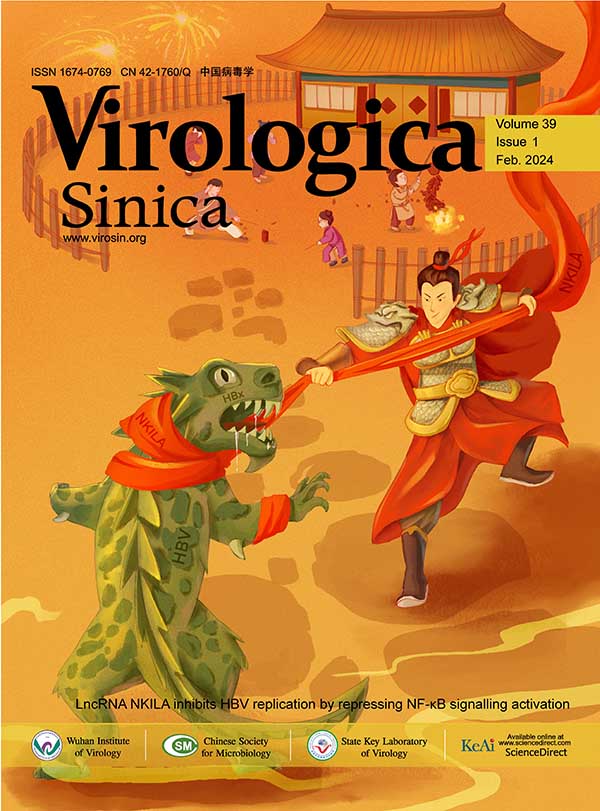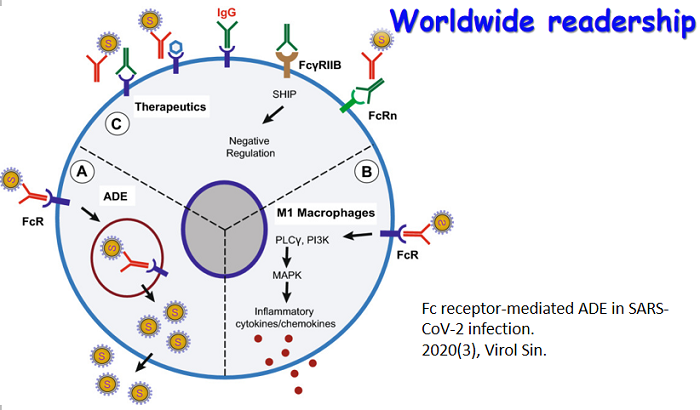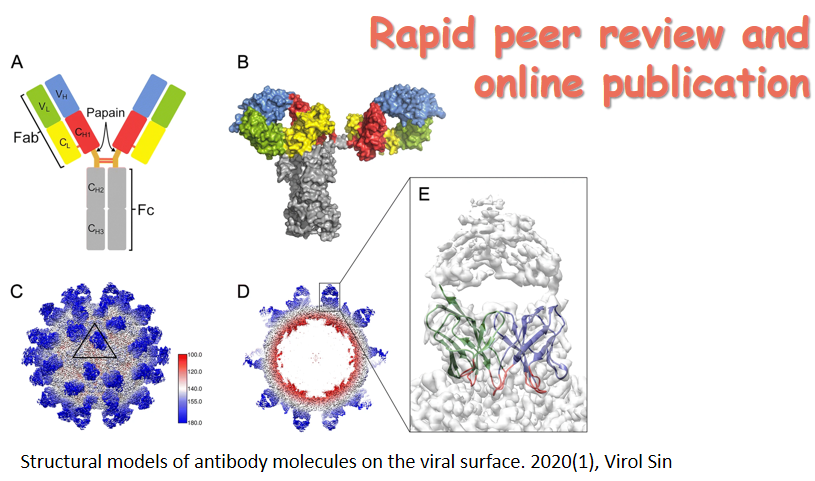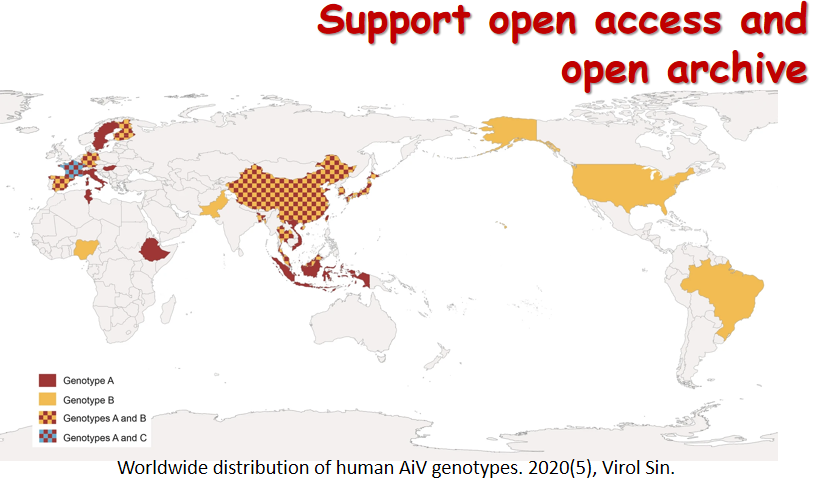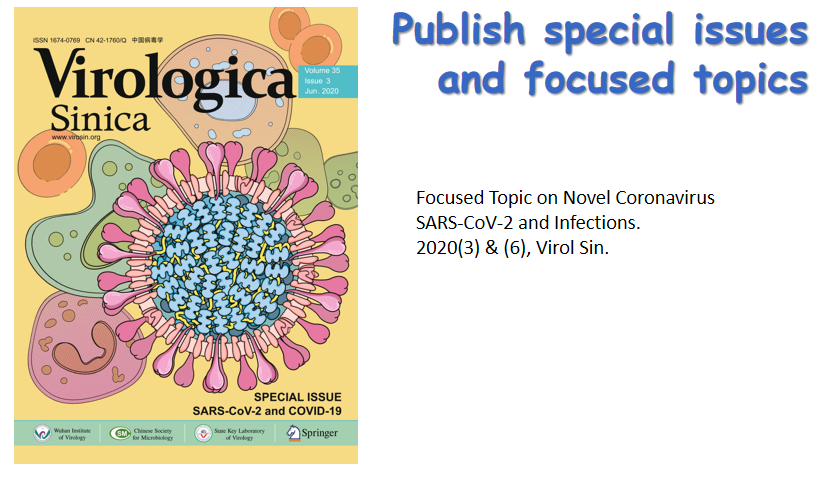|
The HIV-1 accessory proteins ( Nef, Vpu,Vpr and Vif ) are essential for viral replication, and may be processed for recognition by CTL. However, only limited data are available to evaluate the CTL responses against these proteins in naturally infected individuals. In this study, CTL responses against the accessory proteins of HIV-1 clade B(HIV-1B) and C (HIV-1C) were analyzed in 61 HIV-1 infected individuals and 10 HIV-1 negative controls by using 142 overlapping peptides according to the consensus sequence spanning the entire accessory proteins. Peptide-specific interferon-γ(IFN-γ) production was measured by Enzyme-Linked Immunospot (ELISPOT) assay. Either HIV-1B or HIV-1C accessory proteins serve as targets for HIV-1-specific CTL, especially the peptides in Nef region are targeted at higher cumulative magnitude and wider frequency than other accessory proteins(P0.001). The cumulative magnitude and the frequency of CTL responses between clade B and C are not significantly different (P0.05), including the immunodominant domains. The cumulative magnitude of HIV-1–specific CD8+T-cell responses to accessory proteins of HIV-1B or HIV-1C contribute nearly 21% of the total HIV-1–specific CTL response. These data indicate that, despite the sizes of these accessory proteins targeted by CTL in natural HIV-1 infection is very small, these proteins contribute considerably to the total HIV-1–specific CD8+ T-cell responses. These findings are relevant for the evaluation of the specificity and breadth of immune responses in naturally infected individuals, and will be useful for the design and testing of candidate HIV-1 vaccines.
HBV X gene was amplified by PCR and cloned into the prokaryotic expressing vector pET-his and the eukaryotic expressing vector pcDNA3.1(-). E.coli BL21 (DE3) were transformed by the recombinant plasmid pET-his-HBx.. HBx protein was expressed by IPTG induction and formed insoluble inclusion bodies, which were dissolved in urea, dialyzed against PBS, and then applied onto Ni column. Anti HBx antibodies were generated in rabbits by immunization with the purified HBx protein. The recombinant plasmid pcDNA3.1(-)-HBx was transfected into HepG2 and Hep3B cell lines, in which HBx expression was detected by RT-PCR and Western blots. In this study, luciferase activities of XBP1 promoter and GRP78 promoter in HBx expressing HepG2 and Hep3B cells were increased by 3~7 folds compared with that of cells mock-transfected with pcDNA3.1(-). RT-PCR showed that XBP1 mRNA was spliced in HBx-expressing HepG2 and Hep3B cells compared with negative controls. Our results demonstrated that expression of HBx induced UPR in HepG2 and Hep3B cell lines and provided insights into the effects of HBx on ER and the mechanisms underlying liver pathogenesis.
The gene sequences of the Hemagglutinin and Nucleoprotein were downloaded from GenBank. Bioedit7.0 softwere was used to pairwise these sequences and to construct a phylogenetic tree to analyze the variation rate of measles virus strains. The results demonstrated that variation rate of hemagglutinin gene was 1.3310-3 in the recent 10 years, which was about 1.4-fold higher than in the former 30 years. The variation rate of nucleoprotein gene was 1.9010-3 in the recent 10 years, which was about 1.8-fold higher than in the former 30 years. These findings suggest that monitoring the variation of measles virus should be emphasized because of the increasing variation rate in the recent 10 years.
The binding of HSVⅠ to receptors of human fibroblast initiates viral infection and induces the cells to express specific proteins. SR-15, one of these proteins, was identified to interact with certain zinc finger proteins containing KRAB domain through binding zinc finger domain in yeast trap system. This interaction impacts the transcriptional repression of ZNF268, which is one of this type of zinc finger proteins in cells.
The polymerase gene, a non-structural gene from strain TS of transmissible gastroenteritis virus (TGEV), was amplified by RT-PCR primers designed based on the Purdue nucleotide sequence in GenBank. The expected 20054 bp product was obtained. The nucleotide sequence of ORF1 of TS shared nucleotide and amino acid identities of 98.8% and 99.0%, respectively with that of strain Pur46-MAD. The identity at the amino acid level for the ORF1 between TS and FIPV, PEDV, HCV299E,SARS was 87%、57%、57%、45%, respectively. RdRp was regarded to have an important role in replication and the results indicated that it was a conserved protein. The data also showed that there was a ribosomal slippage site UUUAAAC and three stem-loop structures in the ORF1a and ORF1b overlapping regions.
When investigating the effect of BTV-HbC3 on the hepatic carcinoma 3B (Hep-3B) cells , we detected a cytopathic effect (CPE) and inhibition activity of Hep-3B cells infected with BTV-HbC3 by using MTT, the apoptosis indicator using flow cytometry (FCM) and microstructures. The results showed that BTV-HbC3 could inhibit the Hep-3B cells proliferation moderately, which depended on the concentration of BTV-HbC3 and time.The human Hepatic carcinoma 3B cells infected by BTV-HbC3 had all the characteristic of apoptosis. Our finding indicated that oncolytic way of BTV-HbC3 was selectively replicated in tumor cells and induced apoptosis. It was further shown in our laboratory that normal human cells couldn’t be infected by this kind of virus suggesting that this virus possessed the potential function of killing the human hepatic carcinoma.
Abstract:Using a pair of specific primers designed according to the relevant nucleotide sequence from GenBank (Accession number:DQ023145), the HA gene of AIV H5N1 subtype with the signal peptide sequence was obtained by PCR from the recombinant plasmid pUC-HA, which contains the full length of HA gene. Sequence analysis showed that a single base, an A, was replaced by aT to generate a stop codon (TAA) at position 967 of HA gene. Splicing by overlap extension ( SOE) method was applied to correct this mutation with two overlapped mutation primers P3 and P4, and then the correct HA gene was inserted into the expression vector pET-32a (+) to geerate the recombinant plasmid pET-HA-2. The target gene was successfully expressed in the host cell E.coli BL21(DE3) in inclusion bodies when induced with 1.0 mmol/L IPTG. Western-blot analysis proved that the recombinant protein had good immunoreactivity to positive serum of H5 subtype AIV. With this recombinant HA protein, an indirect ELISA method (iHA-ELISA) to detect antibodies of H5 subtype AIV was established. Interestingly, this iHA-ELISA could distinguish H5 positive serum from that of H7 and H9 subtypes. This results provide baseline for the investigating new vaccine and the development of new method to detect AIV.
Abstract:EP0, an early protein gene of pseudorabies virus (PRV), plays important roles in viral replication and possibly in PRV latency. In order to select an siRNA that specifically inhibits the expression of EP0, three siRNA templates, EP04, EP08 and EP12, were designed and synthesized according to the EP0 sequence of PRV Ea strain and the siRNA design guidance of Ambion, and then cloned into the siRNA expression vector pSilencer 4.1-CMV neo containing a CMV promoter. This resulted in three recombinant plasmids p4.1-EP04, p4.1-EP08 and p4.1-EP12. Another recombinant plasmid pEP0-EGFP was also constructed by an in-frame fusing the EP0 coding sequence to the 5’-end of the EGFP gene in the expression vector pEGFP-N3. The p4.1-EP04, p4.1-EP08, p4.1-EP12 and a negative control p4.1-NK were separately co-transfected into IBRS-2 cells. Fluorescence microscopic observation, flow cytometric and RT-PCR analysis revealed that all the three siRNA could inhibit EP0 expression in the model as well as in PRV replication, with EP08 being the most efficient one, followed by EP12 and EP04. Our data are important to further study the function of EP0 in PRV replication and latency.
The fusion protein gene of strain F48E8 of Newcastle disease virus was amplified with RT-PCR, and cloned into the pGEM-T vector and named pGEM-NDF. Then, F gene was released from pGEM-NDF by digestion with BamHI and XbaI, and ligated to baculovirus transfer vector, pFastBac1, which was digested with BamHI and XbaI. The ligation yielded a recombinant plasmid, pFast-NDF. The results of sequencing and PCR showed that F gene had been cloned into baculovirus genome correctly. After transfecting sf9 cells with pFast-NDF, the recombinant baculovirus was recovered from the cells. The results of IFA and Western-blot assay indicated that F gene was expressed well in sf9 cells. Furthermore, the F protein was present on the cell membrane, and sf9 cells were fused at 96 hours post-infection, which suggested that F protein had the activity of cell fusion. Animal tests showed that the fusion protein expressed in insect cells induced neutralizing antibody against NDV in mice. All these results provided foundation for the development of F protein.
Nucleocapsid (N) protein genes of 13 Infectious bronchitis virus (IBV) strains isolated from 9 provinces in China between 2000 and 2004 were sequenced and compared to 42 IBV reference strains. The results showed that all of the N genes of the 13 isolates were composed of 1230 nucleotides, but point mutations were common. A phylogenetic tree based on amino acid sequences of N genes from the 55 IBV strains showed that these strains were classified into nine distinct clusters. 17 IBV isolates and 5 vaccines of America, Japan, Holland and China formed clusterⅠto cluster Ⅲ. CK/CH/LHN/00I might be a re-isolation of vaccine strains. Recombinations were observed in the isolates of CK/CH/LSD/03I and CK/CH/LDL/01I. However, IBVs isolated mainly in China between 1995 and 2004 were grouped into cluster Ⅵ to cluster Ⅷ.The deduced amino acid sequences identities of N genes among IBVs of the three clusters ranged from 88.3% to 100%, and 62.3% to 95.1% between these IBVs and those of other clusters. Hence, it was suggested that this genotype may have existed for a long time in China and have occurred with higher number of mutations. Two Korean isolates shared higher identity with Chinese IBV isolates of cluster Ⅵ. Taken together, these results showed that most of IBVs isolated in China formed distinct phylogenetic groups and had a close relationship with Korean isolates compared the foreign strains. On the other hand, recombination of IBV may have occurred at a rather high frequency in recent years in China especially between vaccine strains and field strains in the natural condition.
An 864bp fragment at the 3’- end of the vp3 gene of Goose parvovirus (GPV) HG5/82 isolate was cloned by RT-PCR, and was cloned into pMD18-T Simple vector. Positive clones were identified by REN digestion and PCR and a recombinant plasmid was digested with BamHⅠand Hind Ⅲ and subcloned into the prokaryotic expression vector pET-30a. E. coli BL21 were transformed by the recombinant vector and induced by IPTG at a concentration of 0.6mmol/L. It was ascertained that the target fusion peptide with a molecular weight of 34kDa was expressed. The bacteria induced by IPTG were treated with 6mol/L Guanidine hydrochloric acid and ultrasonotor. The fusion protein was purified by using a ProBondTM Resin kit. The antiserum against the fusion protein was raised in rabbits. Western blot analysis indicated that the antiserum specifically recognized the fusion protein as well as VP1、VP2 and VP3 of GPV HG5/82 strain. In addition, a 65kDa protein of HG5/82 strain was also recognized by the antiserum. Presumablely, the protein may be an unknown structural viral protein of GPV. Combined with previous work, it can be seen the locations of B cell linear epitopes were mapped in amino acid 145~198 and amino acid 231~733 of VP1 sequence of GPV HG5/82 strain. This information may be helpful when designing recombinant diagnostic antigens for GPV.
The vp19 gene of White spot syndrome virus (WSSV) was amplified by PCR with specific primers and subcloned into the prokaryotic expression vector pET32b to get the recombinant plasmid pET32b-vp19. A positive plasmid was transformed into the host cell Origami(DE3)pLysS and the target gene was successfully expressed as a fusion protoen when induced with IPTG. The molecular weight of the engineered protein was about 37kDa as demonstrated by SDS-PAGE and Western-blot. The engineered protein Trx-VP19 purified by Ni2+-column chromatography was injected into crayfish or used as a supplement to feed crayfish. Crayfish vaccinated by intramuscular injection with Trx-VP19 showed lower cumulative mortality due to WSSV compared to vaccination with bacteria expressing the empty vectors.
The peptide gene of Cecropin D was amplified by RT-PCR, cloned into the expression vector pET32a to generate the recombinant plasmid pET32a-CD. E.coli BL21 (DE3) were transformed by the plasmid and it was observed that the target gene was expressed at high-level in the form of fusion protein when induced with IPTG. The molecular weight of the fusion protein was 23kDa by SDS-PAGE and it constituted about 30% of total cell proteins, indicative of high levels of expression. The fusion Trx-CD was purified by Ni-NTA chromatography, and then cleaved into two parts, Trx (18kDa) and mature antimicrobial peptide CD(5kDa) by the enterokinase. The antim icrobial activity of the recombinant CD was checked by bacteria growth inhibition zone assay. Also, when BmNPV was mixed with CD for 4 h, the viral infectivity was markedly decreased. This indicated that the recombinant antimicrobial peptide CD has an inhibitory effect on BmNPV.
p10 is one of the two very late genes that are highly expressed in baculovirus infected cells. We have studied the function of P10 by constructing a p10 deletion recombinant of the Helicoverpa armigera singly-enveloped nucleopolyhedrovirus (HaSNPV). The p10 gene of HaSNPV bacterial artificial chromosome (HaBacHZ8) was replaced with a DNA fragment containing a chloramphenicol antibiotic gene and a 40bp flanking region using the λ phage Red recombination system in E. coli BW25113. Polyhedrin and gfp genes were then translocated to the p10 deleted HaBacHZ8 using a Bac-to-Bac system generating the recombinant bacmid HaBacΔp10-PH-eGFP. Virus growth curves and bioassays indicated that deletion of p10 did not impair the infectivity of virus in vitro and in vivo. However, electronic microscopic analysis revealed that deletion of P10 resulted in the fragmentation of polyhedral envelope.
The objective of our present study is to explore the potential use of pRNA as a bio-carrier of siRNA to inhibit HBV gene expression and replication. After co-transfected with pHA-HBs into 293T cells, HBVsi18-42, a pRNA-escorted siRNA, suppressed HBsAg and accumulated in the cells in a dose-dependent fashion. HBVsi18-42 substantially inhibited HBV gene expression and replication initiated by pHBV1.3 in HepG2 cells. In hydrodynamic injection mouse model, Balb/cJ mice were co-injected with pHBV1.3 and HBVsi18-42. Serum concentrations of HBsAg were analyzed by ELISA on days 1, 2, and 3 post-injection. HBV core protein in mouse liver was visualized by immunohistochemical staining. The results showed that the HBsAg levels in mice sera were reduced by 60%~90% in consecutive days relative to the control group, and the number of HBcAg positive hepatocytes in the mouse liver sections was decreased substantially by 79.1%. Our preliminary data showed that pRNA could be used as bio-carrier for the delivery of siRNA to knock down HBV gene expression and repress viral replication.
In order to determine the effect of silencing Dicer on shRNA-mediated RNA interference, we constructed two shRNA expression vectors that targeted the RNAse III domain of the Dicer gene. The shRNA vectors were transfected into 2215 cells, colon cancer TC cells and Green Fluorescent Protein (GFP)-tagged HepG2 A9 cells using lipofectamineTM 2000. The level of Dicer mRNA was assessed by RT-PCR. After the knocking-down of the Dicer gene was confirmed in the GFP-tagged HepG2 A9 cells, another shRNA expression vector that targeted the GFP gene was transfected in these cells. The suppression of GFP expression was evaluated by RT-PCR and fluorescence microscopy. We found that anti-Dicer shRNA expression vectors efficiently inhibited the expression of Dicer in the tested cells lines. Moveover, when the Dicer expression was silenced in GFP-tagged HepG2 A9 cells, the GFP-targeting shRNA expression vector was less effective in silencing GFP expression. Thus, our results indicated that the expression of Dicer could be inhibited by anti-Dicer shRNA expression vectors, and that the expression silencing activity of shRNA expression vectors is dependent on the presence of Dicer enzyme.
The polypeptide fragment PrP106-126 of the cellular prion protein was utilized to construct the model of cultured cortical neurons and cerebellar granule cells. The model was used to study the viability of neurons and PrP gene expression. The results showed that the viability of cortical neurons and its PrP gene expression decreased significantly after incubation with PrP106-126, compared with that of the SCR-treated group and the control group. Similar results were obtained for treated cerebellar granule cells but with different extent and time phases. These findings provided relevant base-line data for understanding the function of the prion protein in diseases and for further studies of molecular pathogenesis of TSE.
A phage display random decapeptide library with high titer was constructed using pCANTAB 5 E as vector and used to select and identify antigen epitopes. ScFv A1, which specifically binds the shrimp’s White spot syndrome virus (WSSV), was used to pan against the decapeptide library and a random 15mer library, respectively. A series of positive clones that bind specifically to scFv A1 were obtained. The amino acid sequences of the positive peptides were compared with WSSV388 fragment, which is the antigen of scFv A1. We found that most of the sequences of the positive peptides were similar to a fragment,K••••R••R•Q, located on C-terminal of WSSV388 fragment. We deduced that the mimic antigen epitopes of scFv A1 were conformational epitopes structured by the discontinuous amino acid fragment, but not by a linear amino acid fragment. These results show that phage display peptide library technology is a powerful method for analyzing the structure of antigen epitopes, which is helpful to further explore conformation and function of the structural proteins of WSSV, and the mechanisms of interactions of the virus with the antiviral antibodies and host cells.
The gene fragment coding for amino acids 281 to 395 of the E protein of DENV-2 (New Guinea C strain) was amplified by PCR, comprising Domain III (amino acids 295 to 395) of the E protein. The fragment was cloned into pMD18-T vector and subcloned to expression vector pET-28a and pMAL-c2X. The recombinant plasmid pET-28a-D2EIII was transformed into E.coli BL21(DE3) and the pMAL-c2X-D2EIII was transformed into E.coli TB1. The induced recombinant proteins were purified by His-tag and MBP-tag affinity chromatography, respectively. The purified protein His-D2EIII was used to immunize rabbit three times at two-week intervals, the immunized rabbit produced high titer anti-His-D2EIII polyclonal antibody. The result of western blot indicated that the expressed fusion protein could react with the polyclonal antibody against Domain III of E protein.







